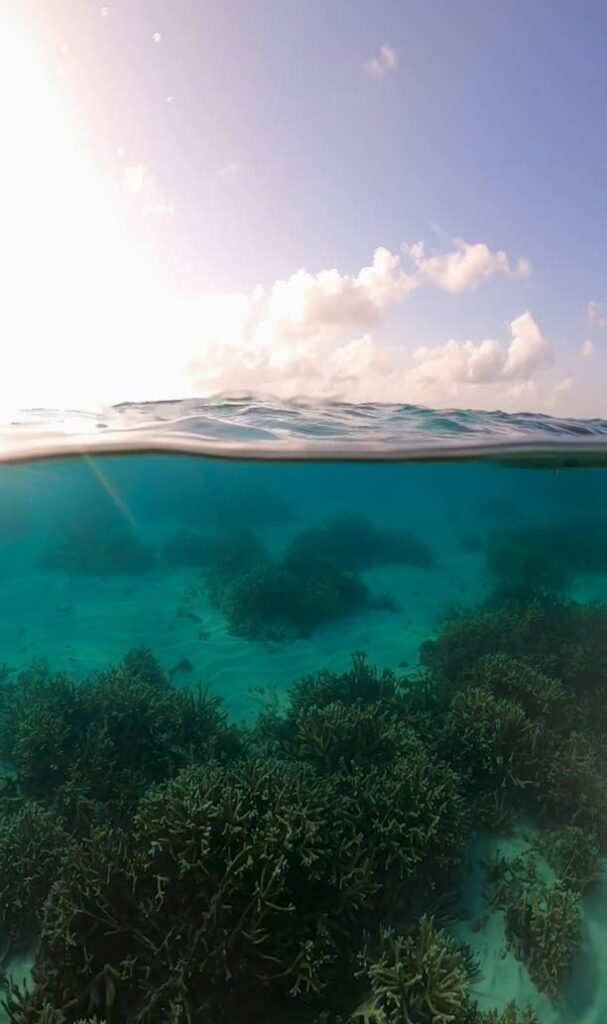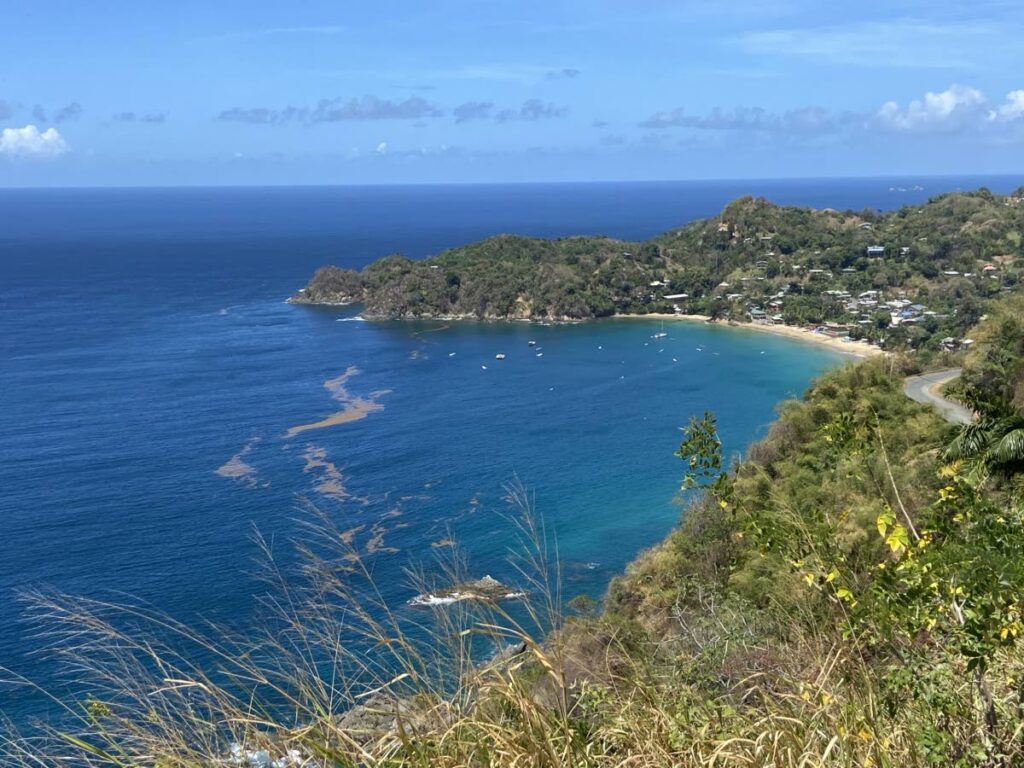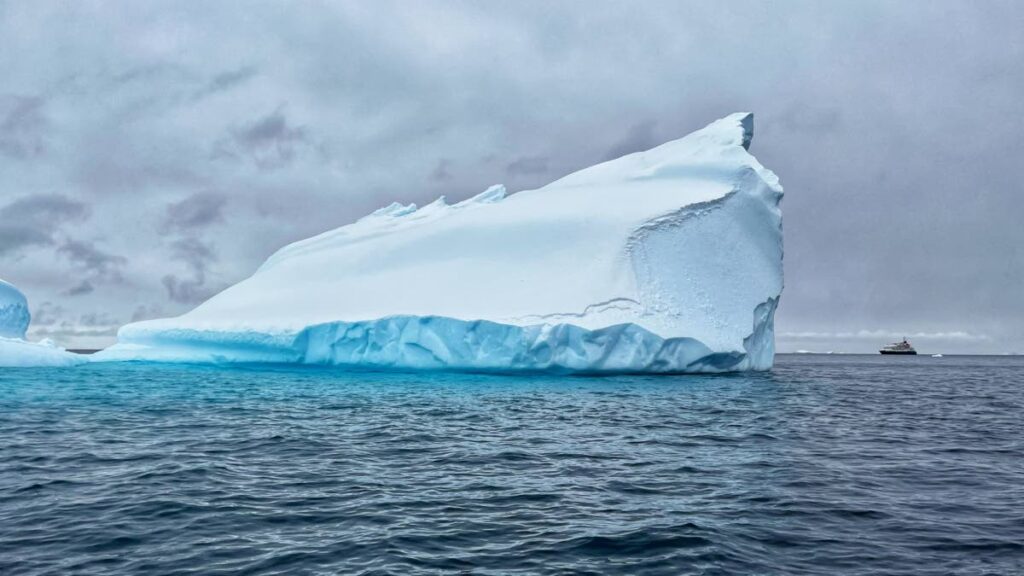The state of the ocean 2024

Dr Anjani Ganase presents the high points of the recent report released by the Intergovernmental Oceanographic Commission (IOC) of Unesco. The report collects the observations and data of some 150 member states for the benefit of a world linked by one ocean.
The years 2021-2030 have been designate the Ocean Decade by the UN. The up-to-date report released this week in Paris by Unesco provides alarming evidence of a growing ocean crisis.
However, there is hope in action, as technologies and international collaborations allow developing countries to move closer toward sustainable management and conservation of their ocean resources.
A clean ocean
The report focused on worsening ocean pollution from two main sources: nutrient and plastics. Nutrient pollution – what runs off the land into our drains or is actively discharged – results in eutrophication, or the formation of microbe and algae blooms in nearshore ecosystems.
Chronic cases can alter the ecosystem by shifting benthic habitats such as the coral reefs and seagrasses to algae bloom systems. These shifts impact the ocean food webs when corals which are habitat providers can no longer fulfill their functions. Algal blooms are unsightly and very harmful in many ways. Some blooms may result in the toxic algal spread that suffocates and kills marine life.
Other algal blooms, such as sargassum, which originates from the open ocean, are also influenced by nutrient pollution from the South American and African continents. While the sargassum blooms out at sea, when it comes ashore it smothers coastline habitats, and destroys tourism and the fishing industries in the Caribbean.
Harmful algal blooms (HAB) are increasing in frequency because of global warming and nutrient pollution. Monitoring of HABs, the areas of impact, species, conditions are essential for forecasting HABs in the future.
Researchers have calculated that some 25 million metric tons of micro- or nano-plastics are transported to the ocean by air. Meanwhile, plastic waste has been discovered in large areas of the ocean seafloor and most comes from fisheries waste. Current plastic-waste pollution (450 million metric tonnes per year) is estimated to double by 2045.
Without the necessary strategies for responsible disposal, plastic pollution is expected to choke marine life and impair livelihoods, especially for small island nations with very little infrastructure to manage their own waste, let alone the plastic that washes up on their shores, carried by the ocean. Plastic pollution requires significant waste management and clean-up action in the ocean.

A healthy and resilient ocean
The ocean is warming at an unprecedented rate and the impacts to marine life and ecosystems are clear.
The upper 2000 metres of the ocean has been warming since the 1960s with warming increasing in the last 20 years.
Warming will continue in the future, and will not be reversible for the next 100-1,000 years.
Sea-level rise, combined with the impacts of more intense storms, is also being observed.
Less obvious are the impacts of ocean acidification as the oceans continue to absorb large amounts of carbon dioxide. The visible impacts of ocean acidification may not be seen until the end of this century – 75 years, or a lifetime from now. There is significant regional variation and some areas already devastated by ocean acidification. Monitoring of ocean acidification becomes more complicated at the coasts, given the influence of land runoff, freshwater influx, biological and human activities influencing the carbon chemistry.
However, some studies have shown that ocean acidification in coastal areas may be happening at a faster rate. This becomes a real concern for food security as crustaceans, shelled organisms and coral become impaired by ocean acidification.
The latest report assessed the importance of active marine protected areas (MPA) and the implementation of marine spatial planning (MSP).
The target set by the Kunming-Montreal Global Biodiversity Framework under the Convention on Biological Diversity is to protect 30 per cent of the ocean by 2030, and the establishment of MPAs was used as a benchmark.
To date, MPAs cover nine per cent of the ocean, leaving large areas in need of protection. About 70 per cent of all endangered species can be found in MPAs, which are biodiversity hotspots. These areas contribute significantly to food security and ocean health.
Of concern are the marine ecosystems that contribute to carbon storage, and should be protected for this purpose. Unfortunately, mangroves and seagrass beds have declined globally by 20-35 per cent in the last 50 years.
The purpose of MSP is to manage the chronic pressures on critical marine ecosystems and includes the designation of MPAs.
Since the last report (2022), about 126 countries/ territories have started to engage in marine spatial planning (20 per cent increase) with the largest increases occurring in Africa and Oceania followed by the Caribbean, including Trinidad and Tobago.
However, only 45 countries have nationally approved plans, a critical component of implementation.
A productive ocean
Oceans are major food sources for many countries around the world. Fisheries and aquaculture products continued to grow to 218 million tonnes in 2021.
While capture fishing has remained stable since mid-1990s, fish farming has grown to contribute just under 50 per cent of the fisheries production.
Ocean food production provides food for humans, animals and supplements. Given the efficiency of fish farms, there is a growing demand for this method to complement livestock land farms in the future.

There are some places in the world where fish capture and consumption are above the global average, and, not surprisingly, occurs on island nations including the Maldives, Antigua and Barbuda in the Caribbean.
This highlights the importance of developing sustainable management plans for ocean resources, especially as the demand on fisheries continues to grow despite the degradation of ocean habitats and the overexploitation of fisheries.
A safe ocean
Better understanding of the ocean allows us to monitor, forecast and prepare. Today, we have more eyes in the sky, drifting buoys and vessels collecting information about the ocean than ever before.
This has allowed us to accurately project the impacts of sea-level rise as a result of the melting ice caps of Greenland and West Antarctica and the expansion of warm water. Scientists can accurately measure the amount of carbon dioxide being absorbed in the ocean and develop technologies to scrub the carbon dioxide from the ocean.
Ocean observation and forecasting systems have advanced significantly to improve monitoring of climate, fisheries management, energy resources (wind, tidal, geothermal etc), ocean and coastal safety (water quality, flooding management, storm surge predictions based on sea-level rise and coastal conditions).
However, there are regional limitations such as in the Southern Hemisphere, as well as constraints in accessing the information because of the lack of technological infrastructure and expertise to model data.
There has been progress in improving tsunami hazard resilience around the world. Tsunamis will be more dangerous in the future because of climate-change impacts including sea-level rise, putting coastal communities and infrastructure at greater risk. Ninety per cent of tsunamis are generated by earthquakes. Agreements for tsunami detection and early-warning systems have been signed by 150 countries globally.
An inspiring and engaging ocean
Ocean literacy is core to ocean understanding and sustainable development. Ocean literacy over the last two years has grown predominantly in the northern hemisphere (70 per cent).
More work to build ocean awareness and literacy must be undertaken in the southern hemisphere. Getting non-scientists, civil society and the private sector involved in the education, research and management of ocean resources is urgently needed.
Most importantly, indigenous populations have been observing the ocean for much longer than any modern and technological society, and their knowledge must be integrated into current observations.


Comments
"The state of the ocean 2024"